Civil Rights / Cold War
Women's Lives
The ideal American life shown in magazines and on television shows during the 1950s was the white, middle class, suburban family with two children and a mother who stayed at home.
Women who had been encouraged to go to work in factories during World War II were now encouraged to stay at home and have children. And they did have lots of children. Increased prosperity brought on a dramatic increase in births in the years after the war ended. It was even called the “Baby Boom." Read more about the “Baby Boom.”
Although the role of motherhood hadn’t changed over hundreds of years, it was now seen as more of a career. Some women even said they chose to be a career homemaker. “I wanted to be a doctor, but…I made the choice to be a career homemaker,” one woman explained.
With the increased prosperity, some black women could now afford to stay and home and take care of their family instead of working. Ebony magazine celebrated this in a 1950s article, “Goodbye Mammy, Hello Mom.” This meant that black women could work in their own kitchens rather than cleaning and cooking in someone else’s.
With the increased prosperity, some black women could now afford to stay and home and take care of their family instead of working. Ebony magazine celebrated this in a 1950s article, “Goodbye Mammy, Hello Mom.” This meant that black women could work in their own kitchens rather than cleaning and cooking in someone else’s.
Women often did volunteer work in schools, libraries and churches in addition to their home lives. Other women tried various ways of making money.
One way was to become a Tupperware dealer. Dealers would persuade women to hold Tupperware parties in their homes and invite their friends. In return, the homemaker would receive free Tupperware gifts. The dealer would show women at the party Tupperware products and take orders. In this way the dealer would make money on the sales.
She described a voice within women that said “I want something more than my husband and my children and my home.” Women also wanted careers outside the home. Friedan received letters from women who said while they were glad to have raised their children well, “there were my dreams that I never fulfilled.” Read more about women’s rights.
Picture Credits:
- This 1951 photograph shows members of the Fannie Battle Carol Committee collecting cigar boxes from a businessman in Nashville. The photograph was in a newspaper article which explained that the volunteer committee would wrap the boxes in red and green paper to collect donations received at the annual Christmas Eve carol singing. The Fannie Battle Day Home is a day care for children from low income families. Since 1916, carolers went to peoples homes to sing Christmas carols. In return, they collected money for the day home. The Nashville Banner Archives, Special Collections Division, Nashville Public Library
- Barbara Walker walks the runway in the evening gown competition of the Miss America contest in September 1947. Ms. Walker, who was Miss Memphis, won the competition that year, one of only two Tennesseans to do so. Tennessee State Museum Collection, 88.68.1
- Three Tennessee contestants in the 1947 Miss America contest pose for photograph at the pier in Atlantic City, New Jersey. They are (l-r) Georgia Jean Cunningham, Barbara Walker, and Dorothy Jean Cunningham. The two Cunningham women are twins. However, Ms. Walker won the competition and was named Miss America of 1947. Tennessee State Museum Collection, 88.68.2
- Photograph of a Tupperware party in the 1950s. Women would often hold Tupperware parties at their homes. It was a source of income for the company representative, while the woman hosting the party received gifts and discounts on the products. Tupperware was not sold in stores, so many women welcomed the chance to purchase items. They also enjoyed the social opportunity to get together with their friends. Photograph courtesy of the Smithsonian Archives, National Museum of American History
- Tennessee children visit the Fort Loudoun Bookmobile in 1967. Photograph is part of the "Book Mobile Memorial Photos", Fort Loudoun Regional Library. Online at http://www.tennessee.gov/tsla/regional/FLRL/bookmobile_memorial.htm
- Women in Lexington work on the 1954 Christmas Seal campaign for the county. Christmas Seals were given to people who made donations. The funds were used to fight lung diseases. In this case, the posters mention tuberculosis. This photograph was originally published in the Lexington Progress on Dec. 3, 1954. Published in the 2005 Henderson County, Tennessee Connections: A Pictorial History by Brenda Kirk Fiddler, photograph by William Arnold, courtesy of Arnold Studio Archives
-
Photograph of two women protesters. It shows two women marching on the sidewalk in front of businesses while carrying signs. They are on strike agains the telephone company which they call "Ma Bell." Published in the 2005 Henderson County, Tennessee Connections: A Pictorial History by Brenda Kirk Fiddler
Civil Rights / Cold War >> Everyday Life >> How They Lived >> Women's Lives
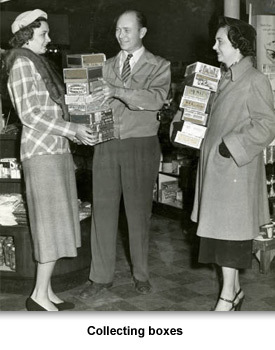
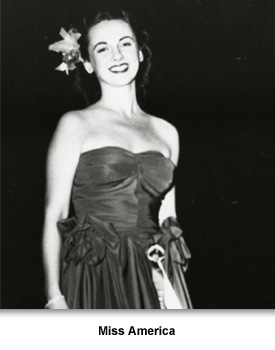
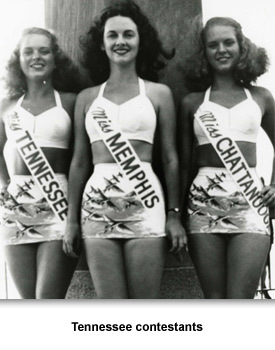
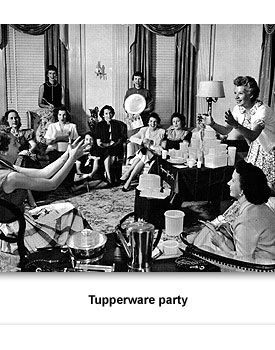
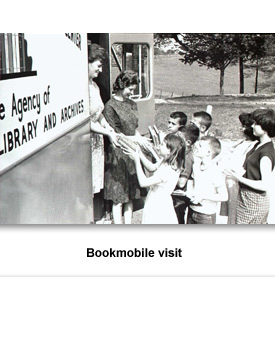
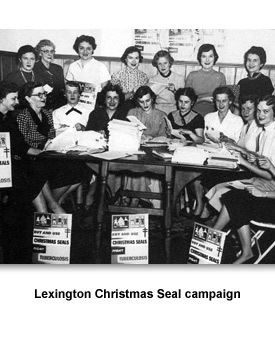
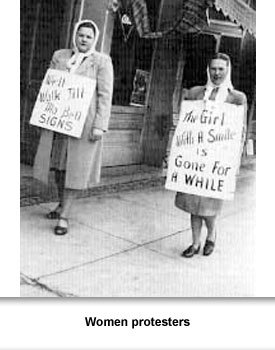
 Sponsored by: National Endowment for the Humanities
Sponsored by: National Endowment for the Humanities